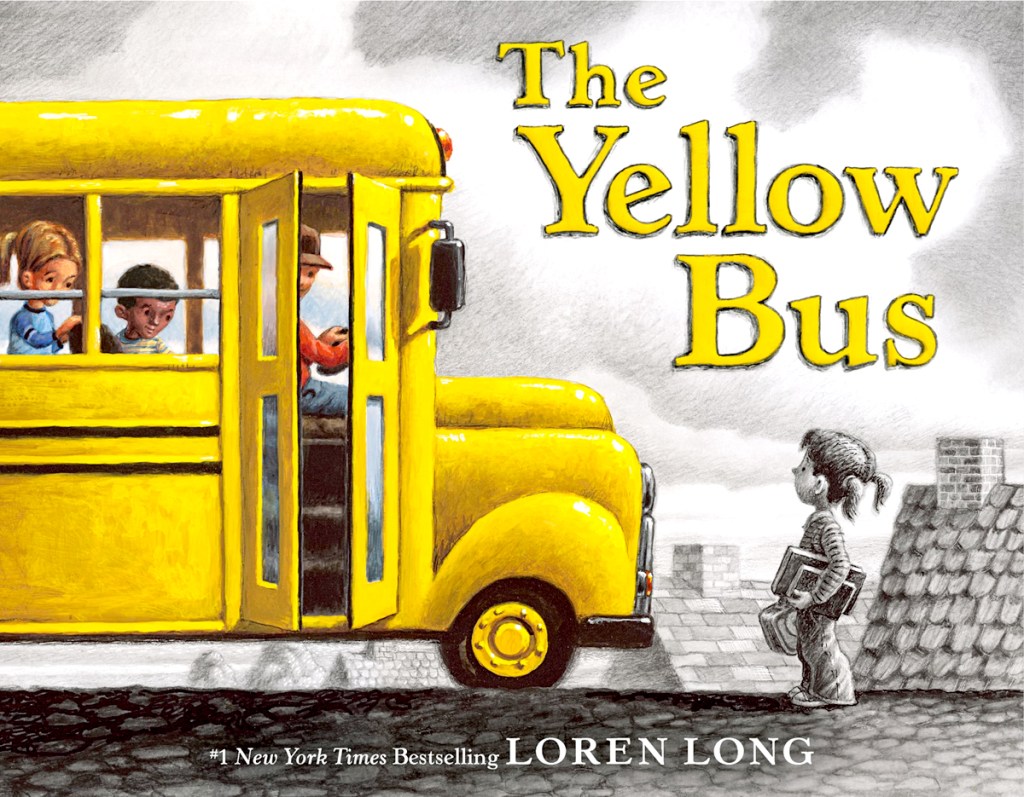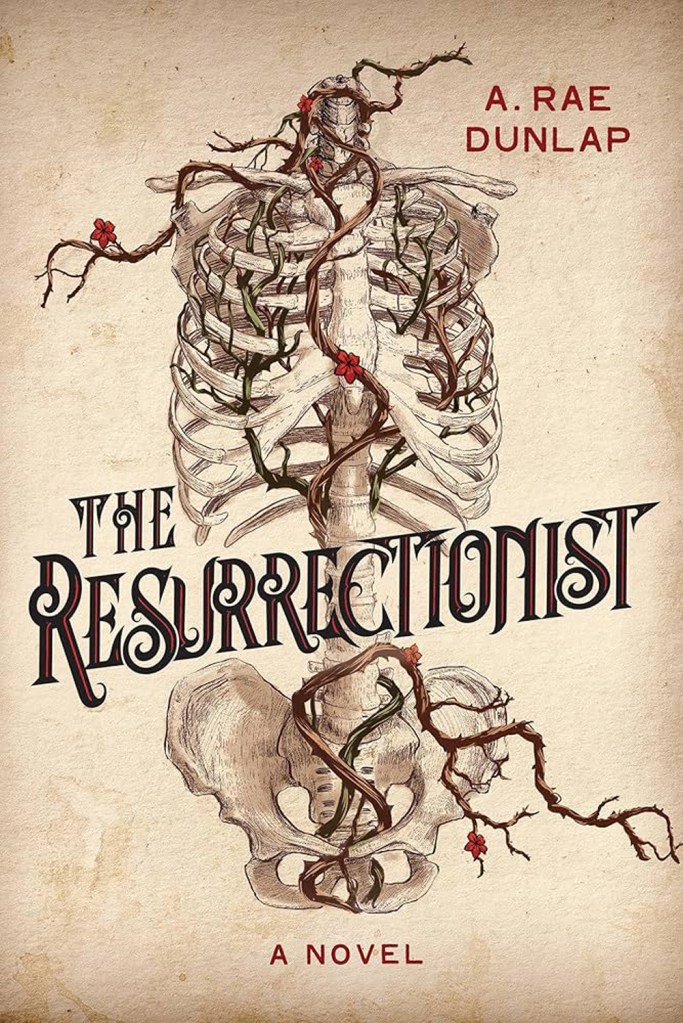
“The Yellow Bus” by Loren Long
One of the greatest memories of starting school is getting to ride in the yellow school bus like the big kids.
Loren Long, a Cincinnati resident, has been an author and illustrator of many children’s books, a number of them award-winning titles. He grew up in Lexington, Kentucky, and said his favorite classes were physical education and art. He attended school at the University of Kentucky and after that the American Academy of Art College. He comments that about “passion for something, I did not get that passion and drive until my last year of college, so parents, be patient.”
For the next 10 years, he worked as a freelance illustrator for magazines such as Sports Illustrated and Time.
His first illustrated book, “I Dream of Trains,” by Angela Johnson won the Society of Children’s Book Writers and Illustrators’ Golden Kite Award for picture book illustration in 2004.
His most recent book, “The Yellow Bus,” anthropomorphizes a bus into a female character, part of Long’s visual story-telling. The bus loves carrying the children from one important place to another. She loves the sounds of the children as they “pitter-patter, giggle-giggle” their way to their seats. Being a school bus is a wonderful job. But children grow up, and yellow buses are replaced by newer buses.
Our yellow bus gets to have another life after she’s abandoned in a junk yard. She becomes a shelter for a group of homeless people who huddled together. The bus is once again joyful about her part in comforting these people.
The bus is bought and moved to a farm where she becomes a playground for the farmer’s goats. The bus again has a purpose and is happy. And when the farm floods, the bus is carried into the river where she becomes a playground for schools of fish.
This book illustrates the many new beginnings life offers us, and the joys and wonders of a purposeful life.
— By Lizz Taylor, Poor Richard’s Books

“Raising Hare: A Memoir” by Chloe Dalton
Chloe Dalton is a British political advisor with a demanding work schedule of shuffling off from one country to another, until the COVID virus forces her to refuge in the English countryside. It is February, and as she heads outdoors for a long walk, she hears the barking of dogs. Dogs often bark and bolt from their owners if they see a squirrel or rabbit.
Along the edge of the cornfield near a tall hedge, Dalton discovers a leveret, a young hare. It is a fluffball that fits in the palm of her hand weighing about as much as an apple with dark brown fur, and a white star on its head. It was so camouflaged that she almost thought it was a rock, but she noticed the rapid rise and fall of its flanks, catching its breath after eluding the dog.
So begins the dilemma of what should one do when finding an injured animal? Leave it and hope the mother returns to protect it? Pick it up to move it to a safer location? Would the mother then find the leveret, and would she reject it because of the human scent?
Dalton decides to let nature take its course, with the plan to return a few hours later to see if the leveret was safe. Four hours later, the leveret had not moved to a safer location and there was no sign of its mother. Still uncertain about what was the right thing to do, Dalton decides to take the creature home with the intent to return it after dark hoping that the mother would find her young.
Thus, begins Dalton’s adventure raising a young leveret. She consults with the game warden who tells her that nobody has ever successfully raised a hare, but her mother had a succession of hedgehogs and baby jackdogs. Dalton thought that rather than let the leveret die, she would try her best to rescue it.
Dalton nurses the animal back to health, and allows the leveret the run of her house. As it ages, she even creates an opening in a door to allow the leveret to go outside and eat from her garden. She researches books but only finds instructions on how to hunt and cook hares.
What becomes of this animal is also the story of the changes that happen to Dalton as she becomes more aware of the creature’s habits. Dalton does not wish to domesticate the hare, but caring for the leveret influences Dalton’s priorities and wakes her senses. The jet-setting Dalton begins to takes on the same quiet rhythm of the creature slowing down to notice nature.
This story is a sweet meditation on how much one can gain when we allow ourselves to connect with the natural world.
— By Lizz Taylor, Poor Richard’s Books

“Big Dumb Eyes: Stories from a Simpler Mind” by Nate Bargatze
Nate Bargatze is known for his family-friendly comedy. What he is not known for is reading, which he will readily admit this in several of his sketches. But that didn’t stop him from writing his own book. “Big Dumb Eyes” will have readers laughing out loud, especially if you listen to the audiobook on the Libby app, like I did. Bargatze narrates the audiobook, helping readers feel like they are tuning in for one of his comedy specials.
Bargatze starts his book off with discussing not his own childhood, but his dad’s. Both of his parents grew up outside of Louisville and later moved to Tennessee, so I think we can claim Bargatze as a semi-Kentuckian. Bargatze moves on to talk about what it was like to grow up with a father who was a professional clown, failing out of college and moving to New York to pursue comedy. Fans will recognize some of the stories from his comedy sketches, but there is also plenty of new content in the book to keep every reader laughing along the way.
— Review by Alex Sandefur, Paul Sawyier Public Library

“The Resurrectionist” by A. Rae Dunlap
In her debut novel, A. Rae Dunlap explores the gristly beginnings of modern medicine in a narrative imbued with history, mystery and a dash of romance. The story follows James Willoughby as he flees his privileged upbringing to pursue a medical career in Edinburgh. The city’s operating theaters have everything a young surgical student could want, except for the opportunity to work on a human cadaver.
This one gap in his education leads him to Aneurin MacKinnon, a smart young man with a passion for anatomy and a career in body snatching. Aneurin and his crew steal fresh bodies from graveyards to supply Edinburgh’s surgical schools with the cadavers they need to make advancements in the field of medicine. As James gets more involved with this dark underworld and with Aneurin himself, he attracts the attention of people much more dangerous than he ever could have imagined.
“The Resurrectionist” by A. Rae Dunlap is a delightful blend of historical fiction, true crime and gothic horror. In between the heavy dark academic atmosphere and macabre descriptions of viscera, there is a tender story of self-discovery. Seeing James grow more confident in himself can be just as compelling as watching him narrowly escape arrest with a cadaver in tow. This book is a good pick for those who enjoy seeing the darker side of history unearthed.
— Review by Victor Kalinyak, Paul Sawyier Public Library










